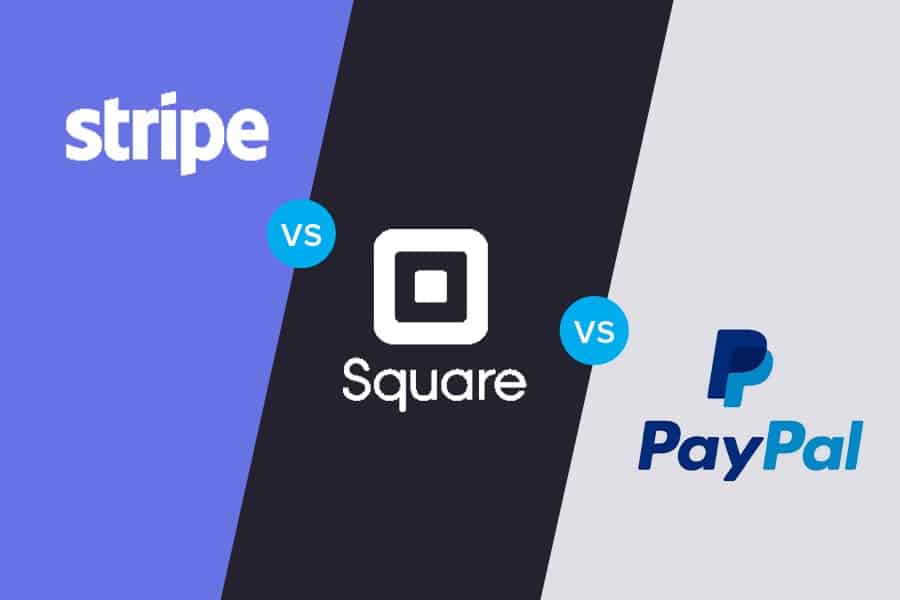
Ecommerce key performance indicators (KPIs) are quantitative measurements that help you track progress towards your business goals by providing data based on set conditions. Monitoring these KPIs can help you make strategic and well-informed business decisions. Treat KPIs for ecommerce as markers of your business success.
It’s critical to track the right ecommerce KPIs to increase customers, drive more revenue, and improve your marketing strategies. Below is an ecommerce KPIs list that is segmented based on a customer’s stage in the purchase journey. Read more about each one and decide if it can help track your goal’s performance.
Ecommerce KPIs for Conversion
1. Add to Cart Rate
Add to Cart Rate (%) = (Sessions with items added to cart / total sessions) x 100
The add to cart rate is the percentage of customers who place an item in their carts while browsing. This KPI indicates how successful (or effective) your product selection is, the quality of your product descriptions, and the effectiveness of your site’s UX.
Note, though, to track this KPI alongside cart abandonment rate and order numbers. The other two stats become less relevant if customers aren’t adding products to their carts to begin with.
2. Average Order Value (AOV)
AOV = Total Revenue / Total Orders
AOV is the amount customers spend per order. This is one KPI that ecommerce merchants usually track and aim to increase. According to Statista, the AOV of online shopping purchases worldwide was $126.42 in September 2023.
3. Cart Abandonment Rate (CAR)
CAR (%) = (Completed Purchases / Shopping Carts Created) x 100
The CAR provides insight into how many users are adding products to their shopping carts but not checking out. The lower this number, the better. If your cart abandonment rate is high (Baymard sets the average CAR for ecommerce at 70.19%), there may be too much friction in the checkout process. Optimize your checkout process or better yet, employ a one-click checkout.
More resources:
4. Conversion Rate (CR)
CR (%) = (Number of Orders / Number of Visitors) x 100
The conversion rate is the percentage of users on your ecommerce websites who are buying (converting). Statista reports that in 2023, the global ecommerce sector had an overall conversion rate of 2.5%. It was highest for shoppers using tablet devices—3.1%.
5. Customer Acquisition Cost (CAC)
CAC = Campaign Cost / Number of New Customers
CAC is, simply put, how much it costs to acquire a new customer. It is usually tied to advertising campaigns. Say you spent $500 on an ad campaign that resulted in 100 new shoppers—your CAC is $5.
Ecommerce KPIs for Retention
6. Churn Rate
Churn Rate (%) = (Lost Customers / Total Customers at the Start of the Time Period) x 100
Churn rates measure the turnover of your customers—or the number of customers lost over a given period. For example, it tells you how quickly customers are leaving your brand by subscription cancellations or renewal failures.
7. Customer Lifetime Value (CLV)
CLV = AOV x Average Number of Annual Purchases x Average Retention (Years)
CLV measures how much a customer will spend at your store over a set period of time. It essentially measures what your customers are worth on average. For ecommerce, the average CLV is $168 across product categories.
CLV also measures how well you retain customers. The higher your CLV is relative to your AOV, the more frequently customers are shopping in your store. A higher score also means that it is worth investing in their loyalty.
Related:
8. Customer Retention Rate (CRR)
CRR (%) = [(Number of Customers at the End of a Period – Total Number of New Customers during That Period) / Total Number of Customers at the Start of That Period] x 100
Your store’s customer retention rate is the percentage of customers your business retains over a specific period. It is a great indicator of customer loyalty and satisfaction.
Learn more: Customer Retention Rate: How to Calculate & Improve
9. Customer Satisfaction Score (CSAT)
CSAT = Sum of All Scores / Total Number of Respondents
CSAT is usually calculated to measure short-term consumer loyalty. It usually is implemented right after purchase by asking customers how satisfied they are with an online purchase. According to the American Customer Satisfaction Index (ACSI), the industry standard benchmark for CSAT scores for online retailers is 80.
Related: Customer Satisfaction Survey Templates & Top Questions to Ask
10. Repeat Purchase Rate (RPR)
RPR = Purchases from Repeat Customers / Total Purchase
RPR is the measure of how many customers make multiple purchases from your store and is expressed as a percentage. This KPI helps in evaluating customer loyalty, retention, and revenue. A high RPR is indicative of a loyal customer base.
Make RPR a KPI if you sell multiple products for the same market or sell products that wear and tear over time (thus, a repeat purchase is necessary).
11. Net Promoter Score (NPS)
NPS = % of Promoters – % of Detractors
The NPS gives insight into how likely your customers are to recommend your brand to someone in their network. Depending on the score (usually a scale of 1 to 10) that is given to the Net Promoter question, there are three categories scores will fall under:
- Promoters = Respondents giving a 9 or 10 score
- Passives = Respondents giving a 7 or 8 score
- Detractors = Respondents giving a 0 to 6 score
Ecommerce KPIs for Monitoring Operations
12. Net Profit Margin
Net Profit Margin = (Revenue – Cost) / Revenue
Your store’s net profit margin is the revenue left once all expenses (operations, product costs, etc.) have been accounted for. It is an excellent measure of your store’s health because it measures your business’ profitability.
It also provides insights if your marketing strategies such as discounts, special offers, or free shipping are driving a real increase in your revenue or impacting your bottom line and making you lose money.
Read more: Revenue vs Profit: Differences & When To Use Each
13. Revenue Per Visitor (RPV)
RPV = Total Income / Number of Visitors Over a Specific Period of Time
RPV is a measurement of how much a customer spends during a visit to your online store on average. This KPI is important for ecommerce websites because it provides a comprehensive understanding of the value that each customer contributes to your online store.
If your revenue from January to March is $200,000 and you attracted 15,000 visitors during that period, your RPV would be $13.33. To improve this KPI, check and troubleshoot your website analytics to brainstorm ways you can drive more online sales.
14. Cost of Goods Sold (COGS)
COGS = Beginning Inventory Costs (of the year) + Additional Inventory Costs (purchased during the year) – Ending Inventory (at the end of the year)
COGS tells you how much you’re spending to sell a product. Spending costs include manufacturing, employee wages, and overhead costs.
Learn more:Cost of Goods Sold: What It Is & How To Calculate It
15. Return on Ad Spend (ROAS)
ROAS = Total Revenue Generated from Paid Ad Campaign / Total Campaign Ad Spend
ROAS measures how much revenue an ad campaign brings to your business. In short, it lets you see how effective your marketing spend has been.
ROAS is usually shown as a ratio. So if you spent $1,000 on an ad campaign that brought in $10,000 worth of sales, you’d have a ROAS of 10:1. A generally accepted positive ROAS ratio is 2.87:1 across all industries.
Related:
- Facebook Ads vs Google Ads: Which Is Best for Your Business?
- How Much It Costs to Advertise on Google
- Facebook Ads Cost in 2023: Stats, Trends & Return on Spend
16. Return Rate (RR)
RR (%) = Number of Items Returned / Number that Has Been Sold
RR is the number of returns resulting from customers’ purchases. Ecommerce return rates in 2023 averaged 17.6%—an increase from 16.5% in 2022, according to the National Retail Federation. This is equivalent to $247 billion of merchandise purchased online returned.
Reduce return rates by having clear product descriptions, a visible and clearly defined return window, and identifying trends in commonly returned items. Remember that returns not only cost you money but also can diminish brand reputation and loyalty as customers aren’t satisfied with their purchases.
Related:
- Ecommerce Return Rates: Expert Guide for Small Businesses
- What Is Returns Management: Definition & Strategies
- How to Write a Retail Return Policy (& Free Templates)
Types of Ecommerce KPIs
There are plenty of ecommerce KPIs to track. Online stores usually have KPIs for sales, marketing, and customer service.
- Sales KPIs tell how the business is doing in terms of conversions and revenue. It can be specific or filtered to a channel, time period, employee, etc. to inform business decisions.
- Marketing KPIs indicate how marketing and advertising strategies are performing. When seen from an ecommerce perspective, these let you see which products are selling, who’s buying them, how they’re buying them, and why they’re buying them—enabling you to market more effectively, write better product descriptions, and improve product sourcing or development.
- Customer service KPIs measure how effective customer service is and if you’re meeting customer expectations. These are important to help provide a positive customer experience and improve the customer’s shopping journey.
We recommend not tracking too many KPIs as this can cause confusion and be counterproductive. Choose KPIs based on your business goals, such as boosting sales, streamlining marketing, or improving customer service. For example, since you are in the business of selling, common ecommerce KPIs include net profit, average order value, and customer retention rate.
Shopify’s analytics come with more than 60 pre-built dashboards to help you track your store’s performance. (Source: Shopify)
Most ecommerce platforms have reporting and analytics that you can use to track your store’s performance. Some of the best ecommerce platforms, like Shopify, BigCommerce, and Wix, have built-in reporting and analytics with pre-built dashboards and customizable reports to help you make better decisions, faster.
Ecommerce KPIs vs Ecommerce Metrics
Ecommerce metrics and KPIs are usually used interchangeably but are essentially different. A good rule of thumb is to remember that all KPIs are metrics, but not all metrics are KPIs.
Knowing the differences between the two will help you understand their purpose and application within your ecommerce store.
Metrics are quantitative measurements that are used to track, analyze, and assess specific business activities. They usually are gauged against an industry standard.
Meanwhile, KPIs are quantitative measurements that are specifically chosen to track and analyze the progress of your ecommerce store’s goals. KPIs are directly linked to your online store’s success. Think of it this way—KPIs are the metrics you consider to be the most relevant to your business. Metrics measure processes, while KPIs measure the performance of these processes.
How to Choose Which Ecommerce KPIs to Track
The best ecommerce KPIs for your business will greatly depend on your business goals. Not every online store will track the same set of KPIs. To know how to choose which KPIs to track, follow our recommended approach below.
Step 1: Define your business goal.
Your goals for your online store should be SMART—specific, measurable, achievable, relevant, and time-bound.
Some usual ecommerce goals include:
- Increase revenue by X percent in X months
- Increase website traffic by site visits by X percent in X months
- Improve customer loyalty by reducing churn rate by X percent in X time
Step 2: Identify relevant KPIs.
After setting a goal, identify relevant KPIs that can help you track whether or not you are making progress toward that goal. A general tip is to keep your ecommerce KPIs between three and five per goal. Tracking too many will overwhelm you and you might struggle to see meaningful data.
For example, if your goal is to boost sales by 10% in the next quarter, the top ecommerce KPIs you need to track are conversion rate, site traffic, and daily sales. Similarly, if increasing conversion by 5% in the next calendar year is your goal, you need to keep an eye on the following KPIs—conversion rate and cart abandonment rate.
Depending on your goals, you need to track relevant ecommerce KPIs weekly, monthly, quarterly, bi-annually, or yearly. Keeping track of multiple data points across a period of time will give you better insight into your store’s performance.
Look into your ecommerce platform to determine if you can customize your reports dashboard to show your chosen KPIs and set a duration for each measurement.
Step 3: Track and repeat. Revise if necessary.
Once you have identified the necessary KPIs for your goals, start tracking as soon as possible. The more data you have, the faster you can see patterns and the quicker you can make improvements.
Additionally, don’t fret if you aren’t tracking the appropriate KPIs from the get-go. Experiment, evaluate, and then revise if necessary. Assess your KPIs every three months or so.
Frequently Asked Questions (FAQs)
Click through the sections below to know the answers to the most frequently asked questions about KPIs for ecommerce.
Ecommerce KPIs help track how your business is performing towards your set goals. They measure how well you are progressing towards your goals, and whether your initiatives have been successful or need improvement.
The most crucial KPI for gauging profitability is the net profit margin. It’s the revenue generated after making all the deductions from your online store, including taxes, operational expenses, and others. It tells how much money you make after all the deductions.
Common ecommerce KPI examples are average order value, net profit margin, cart abandonment rate, and conversion rate.
Bottom Line
Familiarize yourself with the ecommerce KPIs mentioned so you can identify and track progress toward your business goals. These help you fine-tune your strategies to improve store performance and increase your bottom line.
Note, though, that you need to track the right KPIs. This can be the difference between success and failure of your business goals. The wrong KPIs will feel like you are shooting blind, while the appropriate ones help optimize your strategies easily. It’s about having the right data to make better business decisions.





